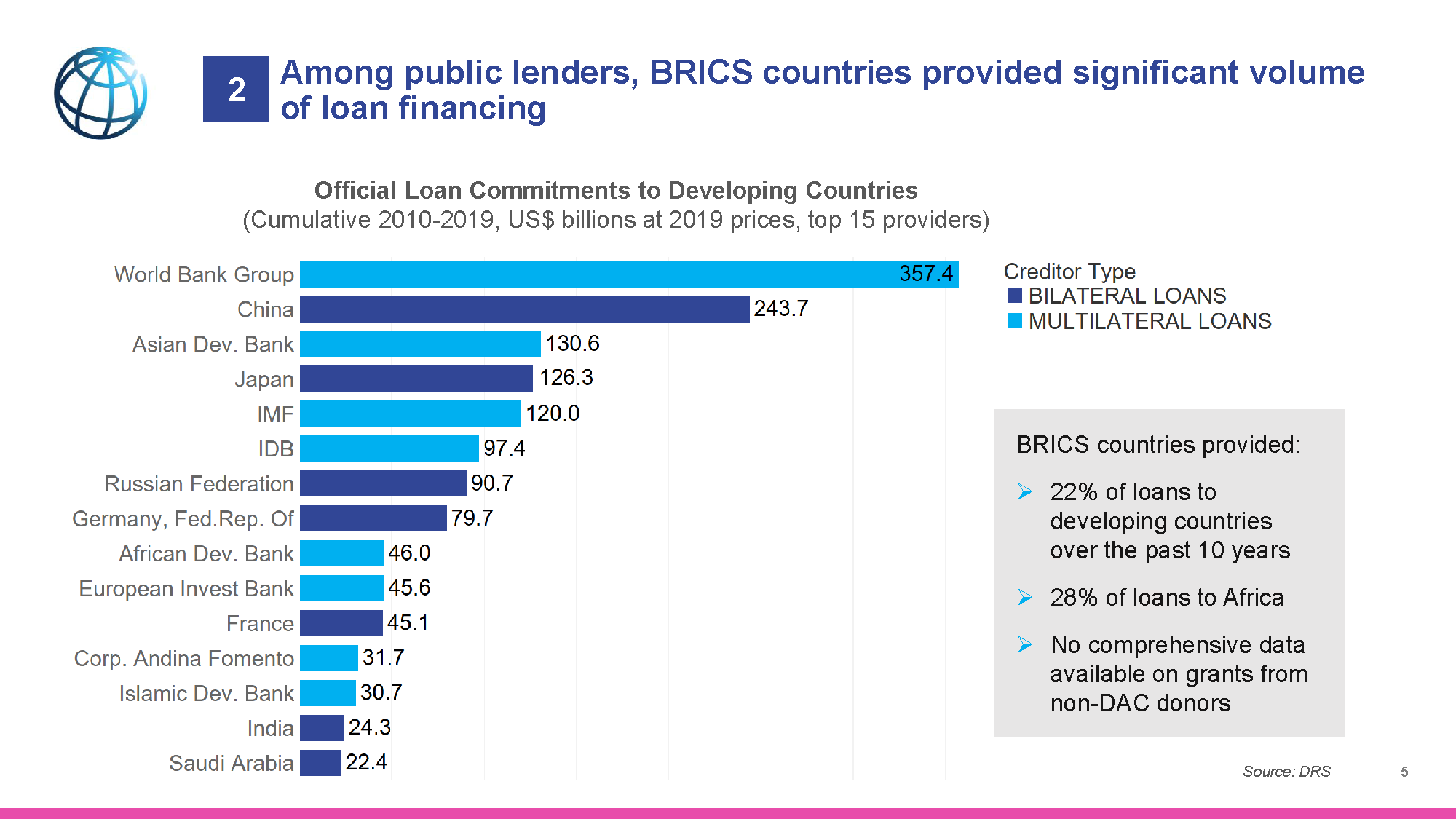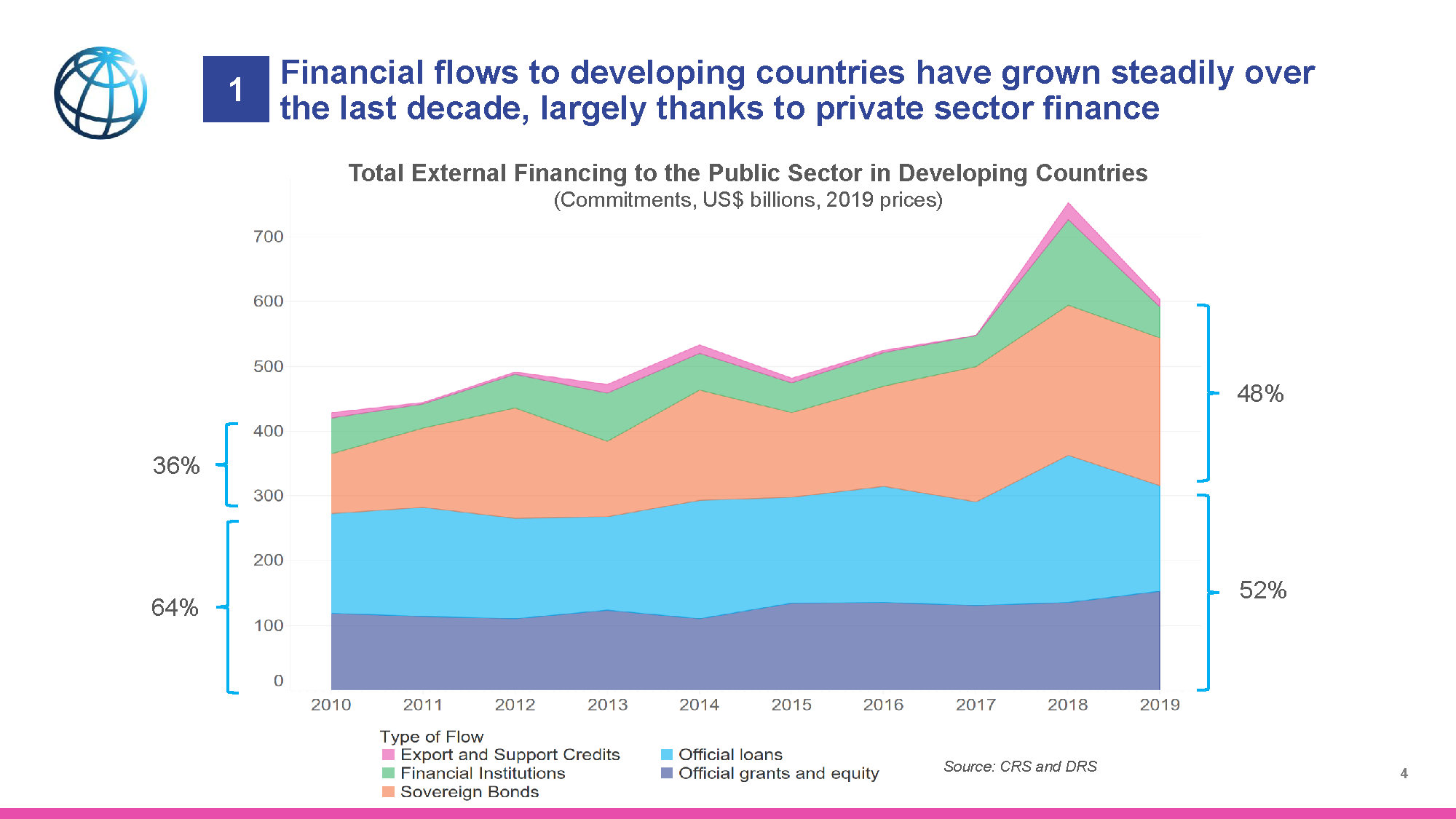On 4 November 2021, ODI and the World Bank hosted a virtual roundtable to present and discuss the key findings of the World Bank report A Changing Landscape: Trends in Official Financial Flows and the Aid Architecture. More than 100 government officials, representatives from international organisations, and experts from think tanks, academia and NGOs joined the debate.
In a nutshell, the report maps how the global aid architecture has changed over the past decade, its volumes, sources of financing, and delivery mechanisms. The report builds on studies published in 2007 and 2011 but it is a departure from them. It expands the analysis beyond Official Development Assistance (ODA) to all public and private sector financing to developing countries, including from the private sector and public donors that are not members of the Development Assistance Committee (DAC), such as the BRICS (Brazil, Russia, India, China and South Africa) and Gulf countries.
This approach reflects a new reality for development cooperation. Many governments of low-income countries (LICs) and middle-income countries (MICs) now have a greater choice of financing options, beyond official development assistance, to finance their national budgets and medium-term strategies and plans, what has been termed an ‘Age of Choice’ for development finance. While some recipient governments might see their ODA flows stabilise or decline, they often have access to a larger set of other financing sources and instruments, from emerging donors to philanthropic organisations, from the private sector to development finance institutions.
This roundtable was chaired by Sara Pantuliano (Chief Executive – ODI) and the report presented by Akihiko Nishio (Vice President, Development Finance – World Bank). The discussion was kicked off by four practitioners and scholars on aid negotiations, policies and architecture: Yvonne Odoi Quansah (Head of External Resource Mobilisation – Ministry of Finance, Ghana); Jason Braganza (Executive Director – AFRODAD); Olivier Cattaneo (Head of the Policy Analysis and Strategy Unit – OECD) and Annalisa Prizzon (Senior Research Fellow – ODI).
Key findings of the report discussed include:
- Rising financing volumes but countries have now less ‘choice’. Financial flows to developing countries have grown steadily over the last decade, largely thanks to private sector finance. Among public lenders, BRICS countries provided significant volumes of loan financing – 22% of global loan financing over the last 10 years. These trends resonate well with the experiences of beneficiary countries shared in the discussion. The debate also challenged whether this is still an ‘Age of Choice’ for development finance or rather an ‘Age of Illusion’. Countries have now limited access to various flows compared to a decade ago – e.g. climate finance, borrowing from international capital markets or even grants and loans from emerging donors – and their ability to choose among them is constrained.
- Fragmentation of development cooperation programmes has risen: this should be one of the priorities for development partners to address. Between 2000 and 2019, the number of countries and multilateral institutions providing official finance around the world grew from 47 to 70. As a result, development activities continue to remain highly fragmented with the average size of official loans or grants reducing by one-third in value over the last 20 years. The growing fragmentation of development projects puts pressure on government officials to manage them, generates high transaction costs and limits governments’ ability to tap into new sources. Greater coordination and delegation between development partners is still very much needed right now; it was already one of the objectives of the aid effectiveness agenda back in 2005.
- A growing share of resources towards global and regional challenges requires a model for development agencies to deliver. The volume of funding that donors have not allocated to specific recipient countries almost quadrupled over the past two decades, reaching $70 billion in 2019 – more than one-fifth of official finance to developing countries. This reflects a growing share of resources towards humanitarian aid and support to refugees as well as the financing and provision of global and regional public goods. The Covid-19 crisis has once again shown that the country-based lending models of multilateral development banks (MDBs) do not generate the right incentives for the financing and procurement of global public goods. Future reforms will need to deal with the long-standing tension between the multilateral development banks being the best-placed institution to finance global public goods and their current country-based financing and resource allocation model. Shareholders should give a clearer mandate and provide resources for the provision and grant financing of global public goods, including vaccine procurement.


